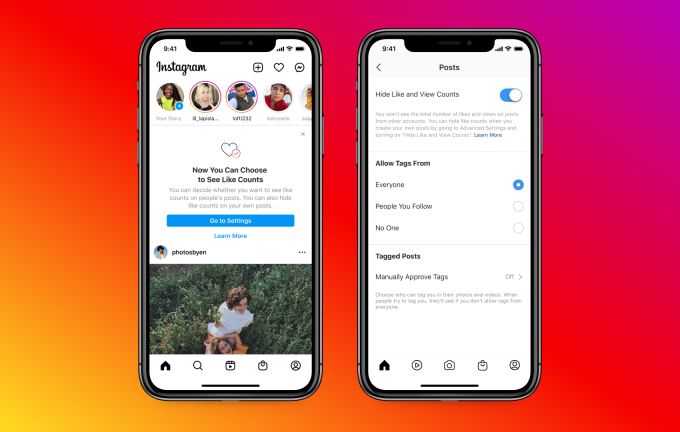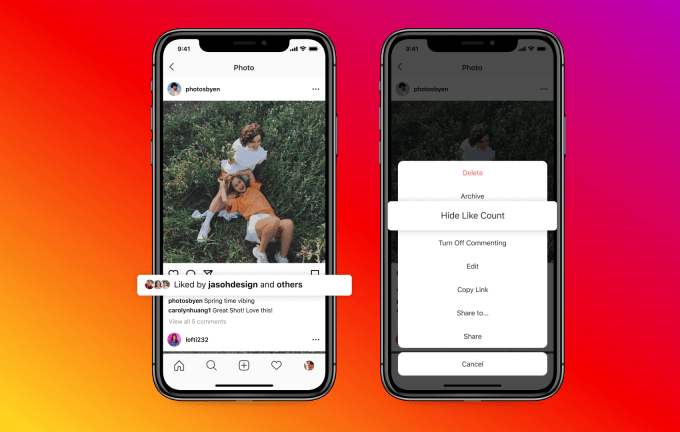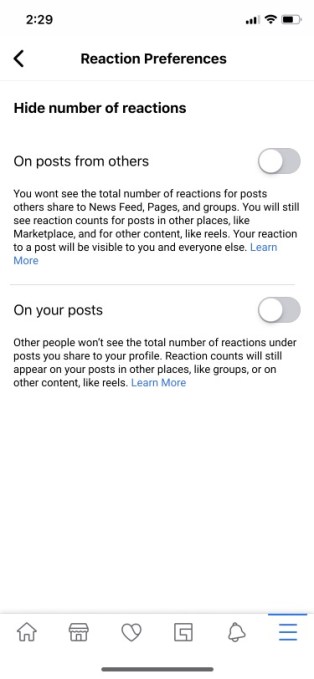If Instagram’s photo tagging feature was spun out into its own app, you’d have the viral sensation Poparazzi, now the No. 1 app on the App Store. The new social networking app, from the same folks behind TTYL and others, lets you create a social profile that only your friends can post photos to — in other words, making your friends your own “paparazzi.” To its credit, the new app has perfectly executed on a series of choices designed to fuel day-one growth — from its prelaunch TikTok hype cycle to drive App Store preorders to its postlaunch social buzz, including favorable tweets by its backers. But the app has also traded user privacy in some cases to amplify network effects in its bid for the Top Charts, which is a risky move in terms of its long-term staying power.
The company positions Poparazzi as a sort of anti-Instagram, rebelling against today’s social feeds filled with edited photos, too many selfies and “seemingly effortless perfection.” People’s real lives are made up of many unperfect moments that are worthy of being captured and shared, too, a company blog post explains.
This manifesto hits the right notes at the right time. User demand for less performative social media has been steadily growing for years — particularly as younger, Gen Z users wake up to the manipulations by tech giants. We’ve already seen a number of startups try to siphon users away from Instagram using similar rallying cries, including Minutiae, Vero, Dayflash, Oggl and, more recently, the once-buzzy Dispo and the under-the-radar Herd.
Even Facebook has woken up to consumer demand on this front, with its plan to roll out new features that allow Facebook and Instagram users to remove the Like counts from their posts and their feeds.
Poparazzi hasn’t necessarily innovated in terms of its core idea — after all, tagging users in photos has existed for years. In fact, it was one of the first viral effects introduced by Facebook in its earlier days.
Instead, Poparazzi hit the top of the charts by carefully executing on growth strategies that ensured a rocket ship-style launch.
The company began gathering prelaunch buzz by driving demand via TikTok — a platform that’s already helped mint App Store hits like the mobile game High Heels. TikTok’s powers are still often underestimated, even though its potential to send apps up the Top Charts have successfully boosted downloads for a number of mobile businesses, including TikTok sister app CapCut and e-commerce app Shein, for example.
And Poparazzi didn’t just build demand on TikTok — it actually captured it by pointing users to its App Store preorders page via the link in its bio. By the time launch day rolled around, it had a gaggle of Gen Z users ready and willing to give Poparazzi a try.
The app launches with a clever onboarding screen that uses haptics to buzz and vibrate your phone while the intro video plays. This is unusual enough that users will talk and post about how cool it was — another potential means of generating organic growth through word-of-mouth.
After getting you riled up with excitement, Poparazzi eases you into its bigger data grab.
First, it signs up and authenticates users through a phone number. Despite Apple’s App Store policy, which requires it, there is no privacy-focused option to use “Sign In with Apple,” which allows users to protect their identity. That would have limited Poparazzi’s growth potential versus its phone number and address book access approach.
It then presents you with a screen where it asks for permission to access your Camera (an obvious necessity) and Contacts (wait, all of them?), and permission to send you Notifications. This is where things start to get more dicey. The app, like Clubhouse once did, demands a full address book upload. This is unnecessary in terms of an app’s usability, as there are plenty of other ways to add friends on social media — like by scanning each other’s QR code, typing in a username directly or performing a search.
But gaining access to someone’s full Contacts database lets Poparazzi skip having to build out features for the privacy-minded. It can simply match your stored phone numbers with those it has on file from user signups and create an instant friend graph.
As you complete each permission, Poparazzi rewards you with green checkmarks. In fact, even if you deny the permission being asked, the green check appears. This may confuse users as to whether they’ve accidently given the app access.
While you can “deny” the Address Book upload — a request met with a tsk tsk of a pop-up message — Poparazzi literally only works with friends, it warns you — you can’t avoid being found by other Poparazzi users who have your phone number stored in their phone.
When users sign up, the app matches their address book to the phone number it has on file and then — boom! — new users are instantly following the existing users. And if any other friends have signed up before you, they’ll be following you as soon as you log in the first time.
In other words, there’s no manual curation of a “friend graph” here. The expectation is that your address book is your friend graph, and Poparazzi is just duplicating it.
Of course, this isn’t always an accurate presentation of reality.
Many younger people, and particularly women, have the phone numbers of abusers, stalkers and exes stored in their phone’s Contacts. By doing so, they can leverage the phone’s built-in tools to block the unwanted calls and texts from that person. But because Poparazzi automatically matches people by phone number, abusers could gain immediate access to the user profiles of the people they’re trying to harass or hurt.
Sure, this is an edge case. But it’s a nontrivial one.
It’s a well-documented problem, too — and one that had plagued Clubhouse, which similarly required full address book uploads during its early growth phase. It’s a terrible strategy to become the norm, and one that does not appear to have created a lasting near-term lock-in for Clubhouse. It’s also not a new tactic. Mobile social network Path tried address book uploads nearly a decade ago and almost everyone at the time agreed this was not a good idea.
As carefully designed as Poparazzi is — (it’s even got a blue icon — a color that denotes trustworthiness!) — it’s likely the company intentionally chose the trade-off. It’s forgoing some aspects of user privacy and safety in favor of the network effects that come from having an instant friend graph.
The rest of the app then pushes you to grow that friend graph further and engage with other users. Your profile will remain bare unless you can convince someone to upload photos of you. A SnapKit integration lets you beg for photo tags over on Snapchat. And if you can’t get enough of your friends to tag you in photos, then you may find yourself drawn to the setting “Allow Pops from Everyone,” instead of just “People You Approve.”
There’s no world in which letting “everyone” upload photos to a social media profile doesn’t invite abuse at some point, but Poparazzi is clearly hedging its bets here. It likely knows it won’t have to deal with the fallout of these choices until further down the road — after it’s filled out its network with millions of disgruntled Instagram users, that is.
Dozens of other growth hacks are spread throughout the app, too, from multiple pushes to invite friends scattered throughout the app to a very Snapchatt-y “Top Poparazzi” section that will incentivize best friends to keep up their posting streaks.
It’s a clever bag of tricks. And though the app does not offer comments or followers counts, it isn’t being much of an “anti-Instagram” when it comes to chasing clout. The posts — which can turn into looping GIFs if you snap a few in a row — may be more “authentic” and unedited than those on Instagram; but Poparazzi users react to posts with a range of emojis and how many reactions a post receives is shown publicly.
For beta testers featured on the explore page, reactions can be in the hundreds or thousands — effectively establishing a bar for Pop influence.
Finally, users you follow have permission to post photos, but if you unfollow them — a sure sign that you no longer want them to be in your poparazzi squad — they can still post to your profile. As it turns out, your squad is managed under a separate setting under “Allow Pops From.” That could lead to trouble. At the very least, it would be nice to see the app asking users if they also want to remove the unfollowed account’s permission to post to your profile at the time of the unfollow.
Overall, the app can be fun — especially if you’re in the young, carefree demographic it caters to. Its friend-centric and ironically anti-glam stance is promising as well. But additional privacy controls and the ability to join the service in a way that offers far more granular control of your friend graph in order to boost anti-abuse protections would be welcome additions.
TechCrunch tried to reach Poparazzi’s team to gain their perspective on the app’s design and growth strategy, but did not hear back. (We understand they’re heads down for the time being.) We understand, per SignalFire’s Josh Constine and our own confirmation, that Floodgate has invested in the startup, as has former TechCrunch co-editor Alexia Bonatsos’ Dream Machine and Weekend Fund.
Powered by WPeMatico




 (@chasestubb)
(@chasestubb) 


